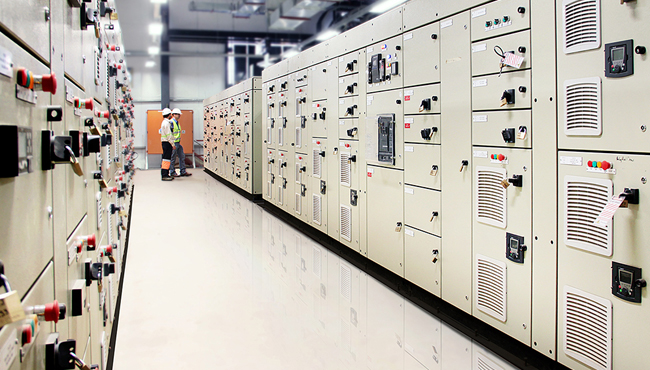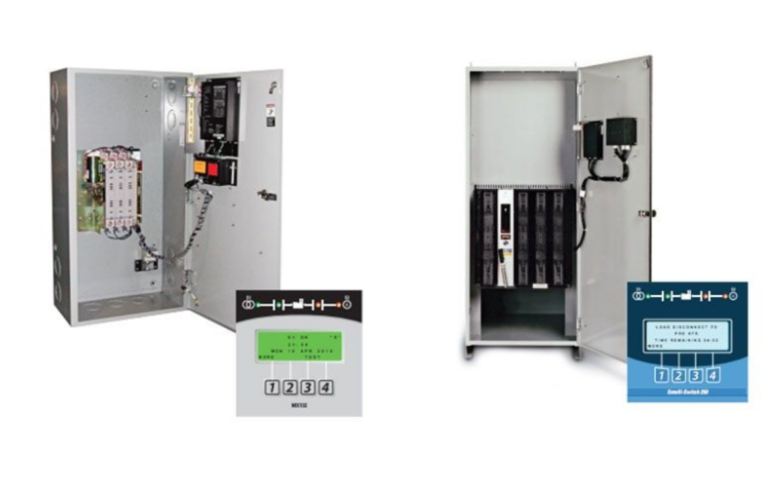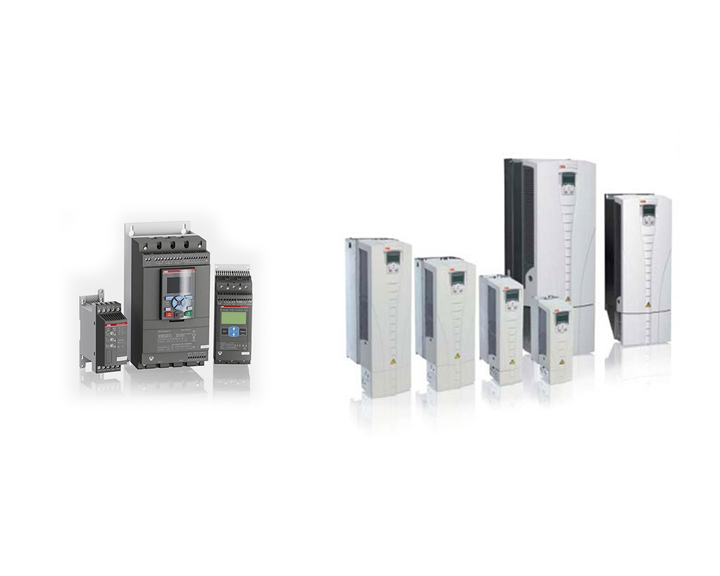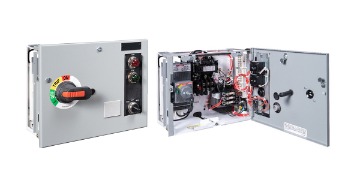A Preventative Checklist for Motor Control Centers
Low-voltage motor control centers are vital components in electrical control systems and are often at the heart of a manufacturing plant. Often, these motor control centers provide power across the site, making them critical to the operation and function of a manufacturing plant.
Despite motor control centers (MCCs) evolving with the advancement of technology, they can still benefit from preventative maintenance to avoid failure and spot issues early. Although many may believe that they can be left to run independently, this is not the case, as they require routine maintenance and preventative care.
In addition, to prolong their lifespan and ensure the safety of all personnel, the motor control center must have preventative maintenance done regularly. In this quick guide, we will review motor control centers and their necessary preventative maintenance checklist.
Why Is Preventative Care For MCC’s Important?
Preventative care for motor control centers is essential for several reasons.
First, like other electrical or technological systems, preventative care is crucial for the health of motor control centers. They play an essential role, and failure of these systems can bring about risks to both personnel and property, can be costly to repair, and result in loss of revenue due to extensive downtime. It is much easier to spot issues ahead of time and resolve them than it is to try and fix a problem once something has broken down, forcing you to deal with the immediate issue as well as the fallout from the loss of power or MCC failure.
Second, you can lengthen the system’s lifespan and eliminate hazardous risks by ensuring regular preventative care is performed. This means that you can create a safer work environment and save money on the company’s bottom line by getting a more useful life out of your equipment.
Personnel should also do regular compliance checks to keep the motor control center compliant to any standards, which can evolve over time.
Preventative Maintenance of MCCs Occurs in Two Ways
There are two ways qualified personnel can do preventative maintenance on MCCs: Inspect energized OR de-energized MCCs.
These two methods are vastly different but can help eliminate or reduce the risks associated with failure, possibly even prevent loss from occurring.
When examining energized equipment, people often use infrared thermography. It can be a problematic and expensive inspection method, but it is non-invasive and helps detect and predict equipment failure. In addition, infrared imaging enables engineers to determine a proper corrective plan to help avoid costly shutdowns, damage to equipment, and personal injury.
Alternatively, inspecting de-energized equipment is the second primary type of motor control center preventive maintenance. Engineers must be well trained, as this method requires more extensive knowledge to properly complete. The inspection of de-energized equipment is very detailed and has several steps. In the following sections, we will delve further into each of the preventative maintenance methods and the technicalities of each.
Using Infrared Thermography
Infrared thermography is one of the most common methods for examining energized equipment. Uses of infrared thermography include preventative and predictive care, which eliminate faults before they become an issue.
The way infrared thermography works is in the name itself: it uses an infrared camera.
This inspection technique is non-invasive and uses a special camera to observe the temperature and thermal patterns of the equipment while it runs at a full load. The camera searches for any variations in temperature while the equipment is running.
If the camera detects any abnormal fluctuation in temperature, it may indicate that the equipment is not performing correctly. Qualified individuals can use this technology on several types of equipment to help isolate and eliminate any issues before they become a hazard—which could be dangerous and costly.
Infrared thermography is also helpful when checking for possible electrical fault conditions, including poor contacts, corroded or loose connections, overloading, unbalanced loads, and overheating. Issues of this degree may lead to failure of the electrical system, equipment fires, arcing, and high-level short-circuits.
The downside is that utilizing infrared thermography as an inspection method can be expensive, complex, and dangerous. In addition, since using infrared thermography involves scanning electrical equipment while it is operating, safety should be a primary concern.
Personnel should wear protective equipment while the enclosure doors are open during scanning. Additional safety measures may include unique camera ports on the motor control center enclosures. With infrared ports, scanning the devices does not require opening the enclosure doors. Trained personnel must be the only ones handling this task.
Inspecting De-energized Equipment
Inspecting de-energized equipment is the second method of motor control center preventative maintenance. Engineers who complete an inspection and perform this type of maintenance must follow definitive guidelines on de-energizing, isolating, and grounding the equipment.
The process of inspecting de-energized equipment is technical and requires more training than basic visual inspections. Therefore, when engineers perform routine maintenance, it is essential to refer to the manufacturer’s manual, NEMA, and NFPA standards. In addition, the manufacturer’s user or installation manual should outline maintenance steps.
Engineers need to inspect several primary components on de-energized equipment. These components include examining the structure, buses and splice connections, protection devices for the wiring and branch circuits, handle mechanisms, starters, and contactors.
In addition, engineers need to examine the structure for moisture or other signs of dampness within the motor control center. Any moisture or condensation originating from an outside source can lead to the failure of the system. If there is moisture in the system, ensure that the moisture is eliminated and seal off the space or conduit that allows the water to enter before re-energizing the equipment.
Any damp insulation material will need to be replaced, dried, or cleaned. After sealing off the area letting the water in, the engineer needs to replace damaged or malfunctioning parts.
Some MCCs can contain bus connections that don’t need regular service for the MCC's life, while others will require routine servicing. Be sure to read the owner’s manual when determining how often to service the bus connections, if at all.
In addition, be sure to check the integrity of bus splices on MCCs that allow servicing bus connections. These items will help identify the bus splices:
- MCC elevation drawings
- User manuals
- Labels on the MCC structure
The manufacturer's user manual or the wiring diagrams usually contain recommendations for torque values on the structure.
Check to ensure that conductors are in good condition and not blocking moving mechanical parts. Discolored insulation may be an indication of overheating in the wires and cables. Examine the fuses and check for loose power and control connections. Reposition or replace wiring as needed if these conditions are present.
While examining the MCC, disconnect the handle mechanisms. Ensure that both the disconnect handle and door interlock mechanisms are properly functioning and have total freedom of movement. If needed, apply lubrication according to the manufacturer’s guidelines. Then, remove and replace any broken, malfunctioning, deformed, or seriously worn parts.
Check the MCC's starters and contactors for any extreme wear or dirt accumulation. If dirt has become an issue, avoid using compressed air, as it can damage the components. Instead, use a vacuum or soft cloth to remove the dirt carefully. Don’t use contact spray cleaners either, as they can cause sticking on magnetic pole faces.
If you notice any discoloration or slight pitting on the contacts, it is usually fine. However, if they appear badly worn, they will need to be replaced in pairs.
Do not attempt to repair severely worn contacts. If you encounter severely worn contacts and need to replace them, replace them in pairs to eliminate misalignment or uneven contact pressure. Additionally, if you file the contacts, be very cautious, as doing so may damage them and shorten their life expectancy.
Motor Control Preventative Maintenance Checklist
To reiterate, motor control centers need to have preventative maintenance to extend their lifetime usefulness and prevent electrical hazards and equipment failure. NETA, which is the InterNational Electrical Testing Association, has created guidelines and standards that electrical systems such as motor control centers need to meet.
When the manufacturer’s manual is unavailable, the NETA guidelines can substitute for their absence and help to determine the necessary and proper maintenance.
Below is a detailed checklist on what you should be doing to help prolong and extend the life expectancy of your MCC.
For visual and mechanical inspection, complete the following list:
- Use drawings and specifications to compare the equipment nameplate data.
- Examine the physical and mechanical condition of the motor control center.
- Examine anchorage, alignment, and grounding. Ensure the MCC meets requirements.
- Ensure the unit is clean - check for dust buildup or residual moisture, or condensation.
- Examine bolted electrical connections for high resistance by utilizing at least one or more of the following methods:
- Use of a low-resistance ohmmeter analogously with Section 7.16.1.2.B.1 of the NETA publication.
- Check the tightness of accessible bolted electrical connections using a calibrated torque wrench to comply with the manufacturer’s published data or Table 100.12.
- Complete a thermographic survey per Section 9 of the NETA publication.
- Test all electrical and mechanical interlock systems to ensure proper sequencing and operation.
- Confirm the correct barrier and shutter installation and operation.
- Utilize and examine all active components and confirm the correct operation of all signifying devices.
- Examine and evaluate the contactors.
- Check the mechanical operation.
- Check that the contact gap, wipe, alignment, and pressure comply with the manufacturer’s published data.
- Check that the overload protection rating is accurate for its application. Set the alterable or programmable devices as guided by the protective device coordination study.
- Check that there is the proper lubrication on mobile current-carrying components and any sliding surfaces to ensure smooth function.
For electrical testing on motor control centers, complete the following:
- Execute resistance measurements through the bolted connections using a low-resistance ohmmeter, if pertinent, in compliance with Section 7.16.1.2.A.S.1. of NETA.
- Carry out insulation-resistance (ohm) tests on all contactor(s), phase-to-ground, phase-to-phase, as well as across the open contacts for sixty seconds in compliance with Table 100.1. of NETA.
- Complete a dielectric withstand voltage test in compliance with the manufacturer’s published data. If the manufacturer’s published data is unavailable or inaccessible, use Table 100.9. of NETA
- Complete contact resistance tests. The four wires DC voltage drop method is a common choice for this test. It utilizes micro-ohmmeters that accurately measure resistance.
- Calculate and measure the resistance of the power fuses.
- Evaluate the control power transformers in compliance with Section 7.2.1. of NETA.
- Evaluate the motor protection devices in compliance with the manufacturer’s published data. If the manufacturer’s published data is unavailable or inaccessible, use Section 7.9. of NETA.
Bottom Line
Preventative care and maintenance are vital in keeping low-voltage motor control centers functioning correctly for years to come.
While the motor control center components will likely need replacement over time, upkeep on motor control center equipment will help avoid replacing the entire system until necessary.
An engineer should routinely complete the inspection of energized or de-energized equipment as a form of preventative maintenance. Infrared thermography is a common choice for examining energized equipment, as it is non-invasive, though costs and risks may vary.
Inspecting de-energized motor control centers takes quite a few steps but effectively locates flaws and potential hazards. Failure to do routine preventative maintenance on motor control centers could lead to costly fixes, loss of revenue due to shut down, and safety hazards.
In some cases, companies may implement an intelligent device to predict where maintenance may be necessary for the plant. However, whether the engineer completes the upkeep using inspection of energized equipment or de-energized equipment, it needs to be done regularly to address faulty components and avoid putting personnel safety in jeopardy.






